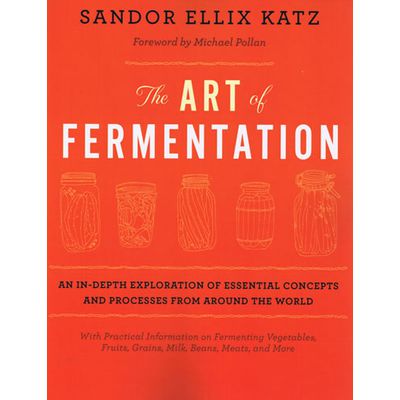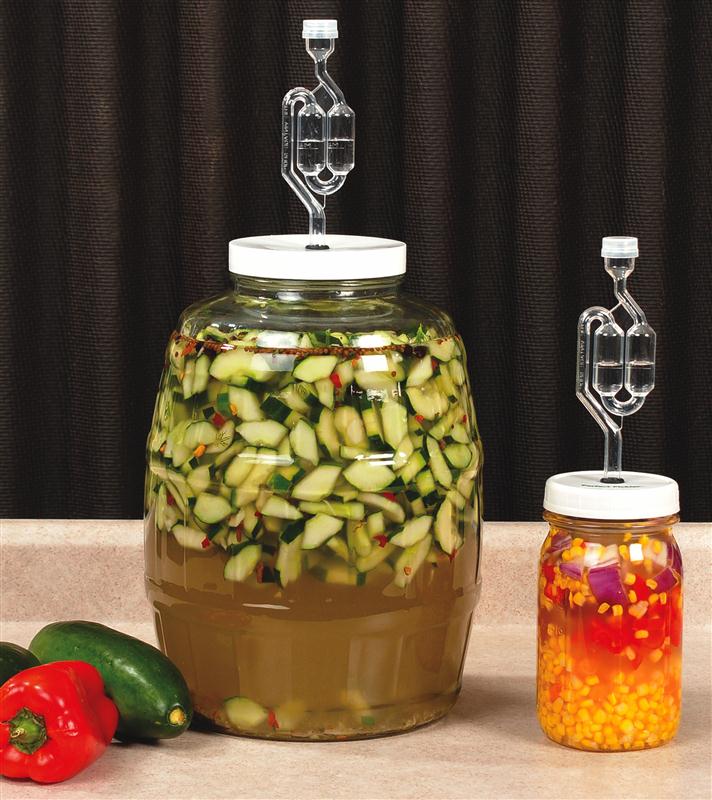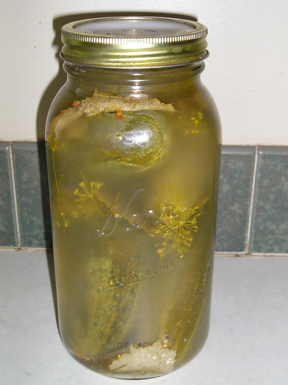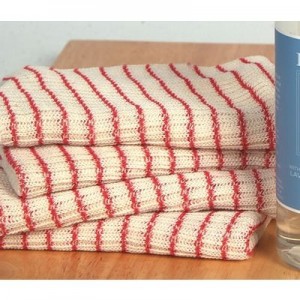
There seems to be a rapidly growing movement toward returning to traditional methods of preserving foods, such as canning, dehydrating, root cellaring, and even… fermenting.
Fermentation particularly seems to be an unfamiliar concept in our fast-paced culture today. Often times when Americans think of something being fermented, they equate it to being rotten or spoiled. We forget that sauerkraut, in fact, is a fermented food. And it’s highly nutritious for you, as are many fermented foods! Almost every culture around the world incorporates fermentation in their daily food preservation techniques. Americans are slowly beginning to re-learn this forgotten art.

I myself have never eaten anything fermented up until recently, not even sauerkraut. So it was quite the experiment when I decided I was going to make fermented pickles the other day. What would they taste like? Would they even be good? I had no idea. But if fermenting my pickles meant that I could add something to my diet that would help restore good gut bacteria and add a little boost to my overall health, I was willing to give it a shot.
The process is quite easy. And unlike canning pickles, it was done in just a matter of minutes.
Here’s what you’ll need:
- Half gallon mason jar w/ lid
- 5 Tbsp Canning Salt, or Fine Grained Sea Salt
- 2 quarts water
- 6 large grape leaves or oak leaves, washed
- Pickling cucumbers- enough to fill the jar, depending

Half gallon jars are in stock at Lehman’s in Kidron, Ohio, and Lehmans.com. Click for more information. on size
- Lots of fresh dill, heads and leaves
- several large garlic cloves, peeled
- Red pepper flakes
The Method
First, make a brine by heating 2 quarts of water to simmering, and then mixing in 5 Tbsp salt until dissolved. Set aside to cool.
Wash cucumbers and grape leaves well, then soak them in a large bowl of ice water until the brine has completely cooled. This helps them retain crispness.
In the bottom of the half-gallon jar, layer two grape leaves, a generous amount of dill, 2-3 garlic cloves, and about ¼ tsp red pepper flakes.
Next, vertically pack as many of the larger cucumbers as you can fit into the jar. Because you’re standing them on end, you may have to wriggle them around to find the maximum pack for your jar.
Cover the cucumbers with another layer of grape leaves, dill, 2 garlic cloves, and a sprinkling of red pepper flakes.
Add another layer of cucumbers, packing to fit. Small cukes might fit better laid on their sides, or you can cut them to fit. Don’t fill it higher than 1 ½ in. from the rim of the jar.
Cover all with one more layer of dill and red pepper flakes. Pour the cooled brine over all to cover completely, filling to within an inch from the rim. Then top it off with 1-2 more grape leaves.
Put the lid on the jar, and allow it to sit on the counter for about 5 days. Do not refrigerate! The brine will get cloudy, and you’ll start to see bubbles forming. Open the lid every day or two, to allow some of the carbon dioxide to escape.
When the brine is cloudy and bubbly, pickles are ready to be moved to the fridge or cold storage where they will stay good for a couple of months.
The Verdict

After fermenting for almost a week, my pickles were ready to taste. I’ll admit, I was hesitant to try them. But my curiosity was too strong to let me back out.
The taste was surprisingly pleasant. Not quite like the dill pickles we’re used to eating from the store, but not at all bad. I was surprised to feel a slight fizzing on my tongue from the carbon dioxide in the batch of pickles. I continued to munch away at my first experiment in fermentation, partially because it was tasty and partially because I knew it was good for me.
But the pickles were still warm. Surely they’d be even better chilled! I put the jar in the fridge for a couple of days, and tried the pickles again.
This time they were absolutely delicious. The taste was closer to what I’m used to with store-bought pickles. Even my 9 yr. old and 6 yr. old gobbled them down.
When my husband came into the kitchen and found us all enjoying a plate of sliced pickles, he got in on the action. We all agreed that I probably could have used a little less red pepper (my guys don’t like hot stuff so much), but the flavor was amazing… for something fermented! You never would have known it.
The benefits of eating fermented pickles are definitely worth giving it a try. I’ll be making more fermented dill pickles, and can’t wait to experiment with other foods as well.
Have you fermented anything lately? What’s your favorite fermented food? Share in the comments section below!
Guest blogger Kendra also writes regularly at her website: newlifeonahomestead.com.





























